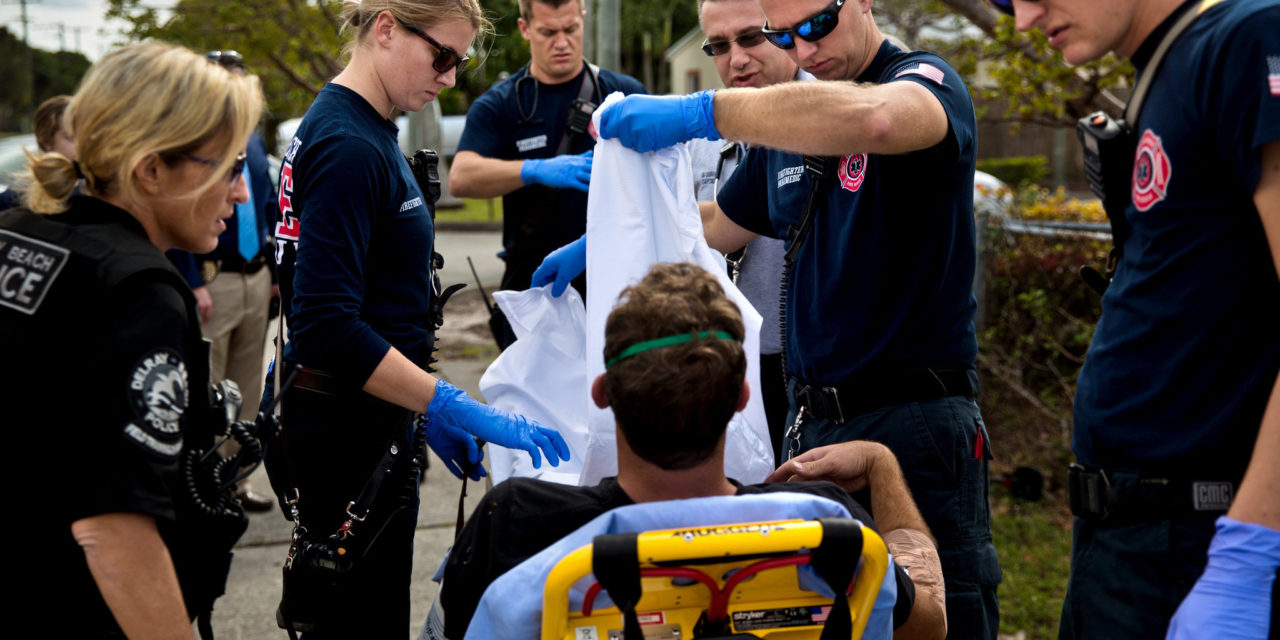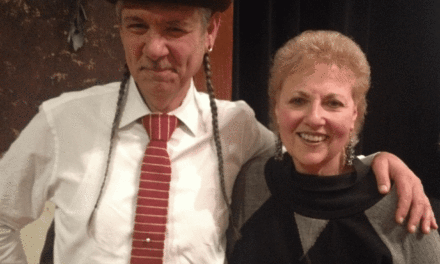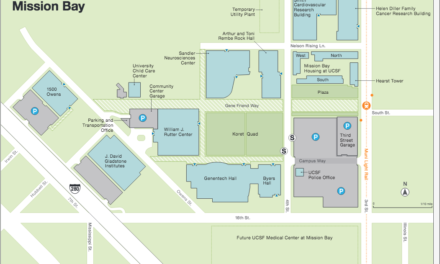The cruel corruption of the Drug Treatment Racket is described by Lizette Alvarez of the New York Times in a piece focused on Delray Beach, Florida. An accompanying photo by Scott McIntyre shows young white cops and paramedics treating a young white man empathetically as he emerges from an overdose. It’s exactly how all citizens should be treated.
In the period ahead, Cannabis will be incorporated into Recovery protocols —a strategy advocated by Tod Mikuriya, MD, more than 20 years ago. And “Harm Reduction” will enter the lingo, just like “CBD” and “terpenes.” Cassandra sez she’s sure of it.
Here are extensive excerpts from Alvarez:
Unlike other places in the United States that have been clobbered by the opioid crisis, most of the young people who overdose in Delray Beach are not from here. They are visitors, mostly from the Northeast and Midwest, and they come for opioid addiction treatment and recovery help to a town that has long been hailed as a lifeline for substance abusers. But what many of these addicts find here today is a crippled and dangerous system, fueled in the past three years by insurance fraud, abuse, minimal oversight and lax laws. The result in Palm Beach County has been the rapid proliferation of troubled treatment centers, labs and group homes where unknowing addicts, exploited for insurance money, fall deeper into addiction…
When several inpatient treatment centers, drawn by low taxes and warm weather, opened their doors here to addicts more than 35 years ago, it seemed a godsend to substance abusers. Soon, other centers, mostly legitimate, followed. Recovering addicts lived together after treatment in supervised apartments or single-family homes. The residences were known as sober homes, where addicts could recover far from temptations and drug-abusing friends back home.
Addicts attended outpatient therapy, found jobs and buoyed each other as they waded back into everyday life. Many stayed in Delray Beach, drawing more addicts as word spread. In time, Narcotics Anonymous and Alcoholics Anonymous meetings were almost as easy to find as a cup of coffee; today there are at least 150 meetings a week. Experts called the treatment and sober house system the Florida Model, and it spread quickly across the country…
Hundreds of sober homes — some reputable, many of them fraud mills and flop houses for drug users — sprawl across Delray Beach and several surrounding cities. No one knows exactly how many exist because they do not require certification, only city approval if they want to house more than three unrelated people. Hoping for a fresh start, thousands of young addicts from outside Florida wind up here in places that benefit from relapse rather than the recovery they advertise.
“The state of Florida licenses haircutters, yet we don’t license any of the people involved in the supervision of young adults suffering from substance abuse disorder, far away from home, without means,” said Cary Glickstein, the mayor of Delray Beach. “These desperate patients and family members are getting exploited and abused.”
Why did this happen? For one thing, Florida, a state famous for insurance fraud, disdains regulation and was ground zero for the prescription drug epidemic. But the proliferation of fraudulent sober homes was in part also the result of two well-intentioned federal laws. First came a 2008 law that gave addicts more generous insurance benefits; then the Affordable Care Act, which permits adults under 26 to use their parents’ insurance, requires insurance companies to cover people with pre-existing conditions and allows for multiple drug relapses.
The result was a whole new category of young addicts with access to insurance benefits. This gave rise to a new class of abusive operator, as painstakingly chronicled in The Palm Beach Post: the corrupt sober house owner. Many drug treatment centers — which also treated inpatients — started paying sober-home owners “bonuses” from insurance money and fees for referring outpatients to their centers while they underwent therapy, according to law enforcement, a grand jury report and court records.
This is illegal. Sober homes, which are not covered by insurance, can get thousands of dollars a month for each recovering addict, in large part from treatment providers, law enforcement and city officials said.
Much of it goes into the owners’ pockets. But it is also used to pay rent so patients can live free and to provide perks that lure patients from other sober houses: manicures, mopeds, gym memberships and, worst of all, drugs. Relapses are welcome because they restart the benefits clock.
To increase profits, many treatment centers and labs overbill insurance companies for unnecessary tests, including of urine, blood and DNA. Some have billed insurance companies thousands of dollars for a urine test screen. Patients often unnecessarily undergo multiple urine tests a week.
Cracking down has proved difficult. Florida does not regulate sober homes, and federal disability and housing anti-discrimination laws offer strong protections to recovering addicts who live in them. Sober houses are categorized as group homes for the disabled. This has complicated arrests, cases and lawsuits, although some treatment centers, lab and sober-house owners in the area have been prosecuted on state or federal charges for patient brokering and money laundering, the result of the Sober Homes Task Force. In some of the worst cases, women were held captive, raped and drugged in sober homes…
Sober homes here are everywhere. They are in wealthy beach-side enclaves, middle-class strongholds and gentrifying neighborhoods. Sometimes whole apartment buildings are converted into sober homes. The houses can be gorgeous; they can also be grim. Most of those are in low-income neighborhoods, where property is cheap, drug dealers plentiful and residents less inclined to make a fuss…
Dealers soon sized up their new customers and stocked up on the drug of choice: heroin. Relapses and overdoses skyrocketed, particularly after potent synthetic opioids like fentanyl and Carfentanil hit the street. But [mainly white] addicts, who seldom have drugs on them, get a trip to the hospital. [Mainly Black] Dealers, if caught, get a trip to jail…
Paramedics and firefighters, like the ones at Delray Beach Fire Station 1, see it all. During peak periods, they can race to 20 overdose calls in a day.
“You look at their IDs,” said Kris Scheid, 42, a driver engineer. “And they are all clean-cut. Then you look at them now, and they are destroyed. You say, ‘Is this the same person?’”
Sometimes, they treat the same person several times in a single day. Or they rescue several people in a single place who had shared a bad batch. Almost always the victims are under 26, white and from out of state. Around town, they are called the “zombies.”
“You throw a rock in all four directions and you can hit someone who had OD’d, will OD or did heroin today,” said Capt. Chris Zidar, 44.
Neal de Jesus, a former fire chief who is serving as acting city manager, said he was so worried about the toll of so many overdoses and deaths that he ordered routine counseling for firefighters and paramedics. The police department brought in counselors, too.
“I have more than 30 years in the business,’’ he said. “My firefighters have seen more death in two years than I have seen in my entire career.”
With so much work for emergency personnel, the police and fire departments have been on a hiring spree.
At the morgue, the medical examiner, Dr. Michael D. Bell, saw the jump in opioid deaths firsthand in 2015. The number climbed even more sharply last year, when ultra-potent heroin laced with synthetics hit the streets. His workload increased 25 percent both years. Last year, 596 people died from opioids in the county. They added a pathologist. Now he needs two more.
Even he, a man used to the constancy of death, said he was taken aback.
“It has really surprised me, how many people die,” Dr. Bell said. “It truly is an epidemic much like when people were dying of AIDS, at first.’’






